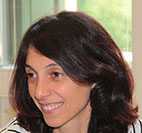Studying at the University of Verona
Here you can find information on the organisational aspects of the Programme, lecture timetables, learning activities and useful contact details for your time at the University, from enrolment to graduation.
Academic calendar
The academic calendar shows the deadlines and scheduled events that are relevant to students, teaching and technical-administrative staff of the University. Public holidays and University closures are also indicated. The academic year normally begins on 1 October each year and ends on 30 September of the following year.
Course calendar
The Academic Calendar sets out the degree programme lecture and exam timetables, as well as the relevant university closure dates..
| Period | From | To |
|---|---|---|
| I semestre | Oct 1, 2020 | Jan 29, 2021 |
| II semestre | Mar 1, 2021 | Jun 11, 2021 |
| Session | From | To |
|---|---|---|
| Sessione invernale d'esame | Feb 1, 2021 | Feb 26, 2021 |
| Sessione estiva d'esame | Jun 14, 2021 | Jul 30, 2021 |
| Sessione autunnale d'esame | Sep 1, 2021 | Sep 30, 2021 |
| Session | From | To |
|---|---|---|
| sessione estiva di laurea | Jul 13, 2021 | Jul 13, 2021 |
| Sessione autunnale di laurea | Oct 12, 2021 | Oct 12, 2021 |
| Sessione invernale di laurea | Mar 10, 2022 | Mar 10, 2022 |
| Period | From | To |
|---|---|---|
| Festa dell'Immacolata | Dec 8, 2020 | Dec 8, 2020 |
| Vacanze Natalizie | Dec 24, 2020 | Jan 3, 2021 |
| Epifania | Jan 6, 2021 | Jan 6, 2021 |
| Vacanze Pasquali | Apr 2, 2021 | Apr 5, 2021 |
| Festa del Santo Patrono | May 21, 2021 | May 21, 2021 |
| Festa della Repubblica | Jun 2, 2021 | Jun 2, 2021 |
| Vacanze estive | Aug 9, 2021 | Aug 15, 2021 |
Exam calendar
Exam dates and rounds are managed by the relevant Science and Engineering Teaching and Student Services Unit.
To view all the exam sessions available, please use the Exam dashboard on ESSE3.
If you forgot your login details or have problems logging in, please contact the relevant IT HelpDesk, or check the login details recovery web page.
Should you have any doubts or questions, please check the Enrollment FAQs
Academic staff
 vittoria.cozza@univr.it
vittoria.cozza@univr.it
Study Plan
The Study Plan includes all modules, teaching and learning activities that each student will need to undertake during their time at the University.
Please select your Study Plan based on your enrollment year.
1° Year
| Modules | Credits | TAF | SSD |
|---|
2° Year activated in the A.Y. 2021/2022
| Modules | Credits | TAF | SSD |
|---|
| Modules | Credits | TAF | SSD |
|---|
| Modules | Credits | TAF | SSD |
|---|
| Modules | Credits | TAF | SSD |
|---|
Legend | Type of training activity (TTA)
TAF (Type of Educational Activity) All courses and activities are classified into different types of educational activities, indicated by a letter.
Food microbiology and traceability of microorganisms (2020/2021)
Teaching code
4S02762
Credits
6
Language
Italian
Scientific Disciplinary Sector (SSD)
AGR/16 - AGRICULTURAL MICROBIOLOGY
The teaching is organized as follows:
teoria
laboratorio
Learning outcomes
The course aims to provide students with basic knowledge on the microorganisms involved in the processing, preservation and spoilage of foods of animal and plant origin; their activities will be de-scribed with particular reference to the interactions between microorganism-product and microorgan-ism-process. The aspects of safety of food will be studied through the application of innovative meth-odological approaches that enable the rapid and specific detection of biotic components both unde-sired and potentially dangerous to the consumer health. The aim of the laboratory is to demonstrate to the student, by way of example, a process of analysis of a food, through the use of classical and molecular analytical methods, which can give general indi-cations on the microbiological quality of the product itself.
Program
------------------------
MM: teoria
------------------------
Introduction to food microbiology. Foods as growth substrate for microorganisms. Ecology of food contamination. Microbial behaviour as a function of the micro-ecological features of the food. Intrinsic and extrinsic parameters that affect microbial growth in food (pH, water activity, temperature, humidity, nutrients, ect.). Physical and chemical methods to reduce microbial growth in food. Food preservation by using additives, radiations, low and high temperatures, lyophilisation, fermentation processes. Incidence, type and characteristics of microorganisms associated with food. Pro-technological microorganisms, spoilage microorganisms and pathogens. Characterization and metabolism of the main microbial groups of interest in food: lactic acid bacteria, yeasts and moulds. Microbiological aspects related to non-fermented foods of animal origin and vegetable origin. Importance of the fermentation processes in food processing. Microbiological aspects related to fermented foods of animal and plant origin. Definitions of biological safety, traceability, risk ... Safety issues (biotic components unwanted and potentially dangerous to health, and compounds released by microorganisms, eg. mycotoxins, biogenic amines, AR genes). Food-borne microorganisms of interest for safety: Aeromonas hydrophila, Clostridium botulinum, Salmonella, etc.. Molecular methods specific for the detection of pathogens and of undesirable compounds released / present in the food. National and international legislation related to the food safety. Solutions, such as detection of the contamination points in the food chain, prevention, application of methods for detecting the contamination in food production.
------------------------
MM: laboratorio
------------------------
The aim of the laboratory is to demonstrate to the student, by way of example, a process of analysis of a food, through the use of classical and molecular analytical methods, which can give general indications on the microbiological quality of the product itself.
Bibliography
| Activity | Author | Title | Publishing house | Year | ISBN | Notes |
|---|---|---|---|---|---|---|
| teoria | Farris G.A., Gobbetti M., Neviani E., Vincenzini M. | Microbiologia dei prodotti alimentari (Edizione 1) | CEA | 2012 | ISBN 978-8-808-18246-3 |
Examination Methods
------------------------
MM: teoria
------------------------
There are no ongoing trials. The examination will consist of an oral assessment of the degree of learning achieved throughout all the course program. To gain access to the test, at least one week before the test, the candidate must submit a report on the practical activities carried out in the laboratory. The exam consists of three or four questions posed to each candidate who will also have to submit a presentation of about 10 minutes on a recent scientific publication related to a topic of the program he chooses. The exam lasts in total about 30 minutes. The final evaluation is expressed in thirty-five.
------------------------
MM: laboratorio
------------------------
At the end of the practice lessons the student should be draw up a report on the activity carried out in laboratory. The manuscript will be discussed during the test.
Type D and Type F activities
Le attività formative in ambito D o F comprendono gli insegnamenti impartiti presso l'Università di Verona o periodi di stage/tirocinio professionale.
Nella scelta delle attività di tipo D, gli studenti dovranno tener presente che in sede di approvazione si terrà conto della coerenza delle loro scelte con il progetto formativo del loro piano di studio e dell'adeguatezza delle motivazioni eventualmente fornite.
| years | Modules | TAF | Teacher |
|---|---|---|---|
| 1° 2° | Python programming language | D |
Vittoria Cozza
(Coordinator)
|
Career prospects
Module/Programme news
News for students
There you will find information, resources and services useful during your time at the University (Student’s exam record, your study plan on ESSE3, Distance Learning courses, university email account, office forms, administrative procedures, etc.). You can log into MyUnivr with your GIA login details: only in this way will you be able to receive notification of all the notices from your teachers and your secretariat via email and soon also via the Univr app.
Graduation
Deadlines and administrative fulfilments
For deadlines, administrative fulfilments and notices on graduation sessions, please refer to the Graduation Sessions - Science and Engineering service.
Need to activate a thesis internship
For thesis-related internships, it is not always necessary to activate an internship through the Internship Office. For further information, please consult the dedicated document, which can be found in the 'Documents' section of the Internships and work orientation - Science e Engineering service.
Final examination regulations
List of theses and work experience proposals
| theses proposals | Research area |
|---|---|
| Dinamiche della metilazione del DNA e loro contributo durante il processo di maturazione della bacca di vite. | Various topics |
| Miglioramento del profilo nutrizionale e funzionale di sfarinati di cereali mediante fermentazione con batteri lattici | Various topics |
| Risposte trascrittomiche a sollecitazioni ambientali in vite | Various topics |
| Studio delle basi genomico-funzionali del processo di embriogenesi somatica in vite | Various topics |
Attendance
As stated in the Teaching Regulations for the A.Y. 2022/2023, attendance is not mandatory. However, professors may require students to attend lectures for a minimum of hours in order to be able to take the module exam, in which case the methods that will be used to check attendance will be explained at the beginning of the module.

 +39 045 802 7839
+39 045 802 7839























